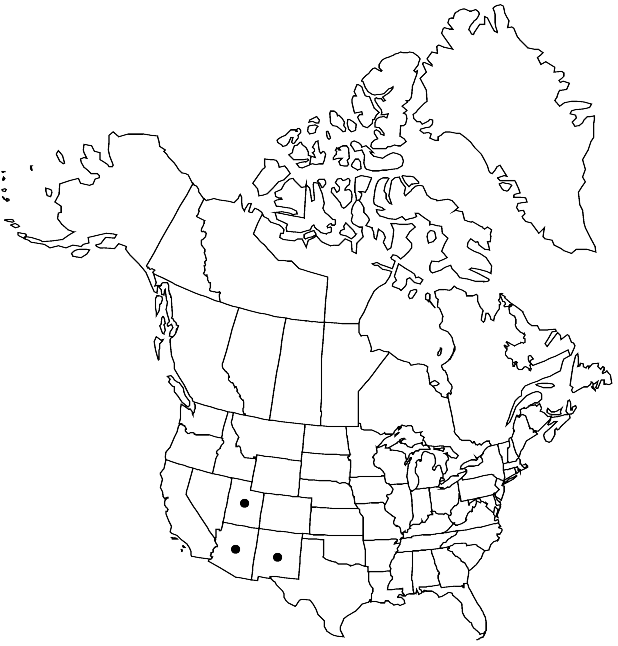Difference between revisions of "Physaria intermedia"
Novon 12: 324. 2002.
FNA>Volume Importer |
imported>Volume Importer |
||
| (6 intermediate revisions by 2 users not shown) | |||
| Line 8: | Line 8: | ||
}} | }} | ||
|common_names=Mid-bladderpod | |common_names=Mid-bladderpod | ||
| − | |basionyms={{Treatment/ID/ | + | |basionyms={{Treatment/ID/Basionym |
|name=Lesquerella alpina var. intermedia | |name=Lesquerella alpina var. intermedia | ||
|authority=S. Watson | |authority=S. Watson | ||
| + | |rank=variety | ||
| + | |publication_title=Proc. Amer. Acad. Arts | ||
| + | |publication_place=23: 251. 1888 | ||
}} | }} | ||
|synonyms={{Treatment/ID/Synonym | |synonyms={{Treatment/ID/Synonym | ||
|name=Lesquerella intermedia | |name=Lesquerella intermedia | ||
|authority=(S. Watson) A. Heller | |authority=(S. Watson) A. Heller | ||
| + | |rank=species | ||
}} | }} | ||
|hierarchy=Brassicaceae;Brassicaceae tribe Physarieae;Physaria;Physaria intermedia | |hierarchy=Brassicaceae;Brassicaceae tribe Physarieae;Physaria;Physaria intermedia | ||
| Line 30: | Line 34: | ||
|elevation=1600-2400 m | |elevation=1600-2400 m | ||
|distribution=Ariz.;N.Mex.;Utah. | |distribution=Ariz.;N.Mex.;Utah. | ||
| − | |discussion=<p>N. H. Holmgren (2005b) pointed out that the lectotype and other material from New Mexico, where Physaria intermedia is very infrequent, is quite similar to P. parvula from northern Colorado and northeastern Utah; it is also quite similar to, but less robust than, P. pulvinata from southwestern Colorado. The material from Arizona, northwestern New Mexico, and Utah may represent an unnamed taxon; further study is needed.</p> | + | |discussion=<p>N. H. Holmgren (2005b) pointed out that the lectotype and other material from New Mexico, where <i>Physaria intermedia</i> is very infrequent, is quite similar to <i>P. parvula</i> from northern Colorado and northeastern Utah; it is also quite similar to, but less robust than, <i>P. pulvinata</i> from southwestern Colorado. The material from Arizona, northwestern New Mexico, and Utah may represent an unnamed taxon; further study is needed.</p> |
|tables= | |tables= | ||
|references= | |references= | ||
| Line 39: | Line 43: | ||
-->{{#Taxon: | -->{{#Taxon: | ||
name=Physaria intermedia | name=Physaria intermedia | ||
| − | |||
|authority=(S. Watson) O’Kane & Al-Shehbaz | |authority=(S. Watson) O’Kane & Al-Shehbaz | ||
|rank=species | |rank=species | ||
| Line 54: | Line 57: | ||
|publication year=2002 | |publication year=2002 | ||
|special status= | |special status= | ||
| − | |source xml=https:// | + | |source xml=https://bitbucket.org/aafc-mbb/fna-data-curation/src/2e0870ddd59836b60bcf96646a41e87ea5a5943a/coarse_grained_fna_xml/V7/V7_1076.xml |
|tribe=Brassicaceae tribe Physarieae | |tribe=Brassicaceae tribe Physarieae | ||
|genus=Physaria | |genus=Physaria | ||
Latest revision as of 23:30, 5 November 2020
Perennials; caudex (buried), branched, (thickened with persistent leaf bases, cespitose); densely pubescent (usually grayish-green), trichomes (sessile or short stalked, spreading), several-rayed, rays furcate or bifurcate, slightly fused at base, (tuberculate or finely tuberculate). Stems several from base, erect to decumbent, (unbranched, stout, densely leafy sterile shoots sometimes present), (0.5–)4–2.5 dm. Basal leaves (clustered at stem base); blade linear to linear-oblanceolate, 2–5 cm, margins entire, usually involute, sometimes flattened, (apex obtuse to subacute). Cauline leaves: blade linear-oblanceolate to linear, 1–3.5(–4.5) cm, margins entire, usually involute. Racemes compact, (often nearly subumbellate). Fruiting pedicels (often expanded distally, ascending or recurved, usually straight or slightly curved, rarely nearly sigmoid), 4–15 mm, (stout). Flowers: sepals (yellowish or greenish yellow), ovate or oblong, 4.5–7.5(–9) mm, (lateral pair sometimes cucullate, median pair tapering at both ends, thickened apically, cucullate); petals spatulate or oblong, 6.5–10.5(–15) mm, (base sometimes widened, apex rounded or retuse). Fruits (sessile or substipitate), subglobose to slightly ovoid, usually inflated, rarely compressed or obcompressed, 4–6(–10) mm, (apex acute, slightly flattened); valves sparsely pubescent, trichomes appressed; ovules (8–)12–16(–20) per ovary; style (2–)3–4.5(–5.5) mm. Seeds flattened. 2n = 18, 20, 36.
Phenology: Flowering Apr–Aug.
Habitat: Dry sandy, gravelly, or rocky soil, claylike hillsides, open chiprock, dry stream beds, gravel bars, open knolls, open pinyon-juniper woods, open stands of sagebrush, Gambel oak or ponderosa pine communities, calcareous substrates
Elevation: 1600-2400 m
Distribution

Ariz., N.Mex., Utah.
Discussion
N. H. Holmgren (2005b) pointed out that the lectotype and other material from New Mexico, where Physaria intermedia is very infrequent, is quite similar to P. parvula from northern Colorado and northeastern Utah; it is also quite similar to, but less robust than, P. pulvinata from southwestern Colorado. The material from Arizona, northwestern New Mexico, and Utah may represent an unnamed taxon; further study is needed.
Selected References
None.